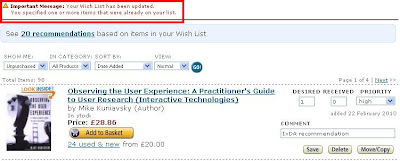Focus groups are lots of fun and, most importantly, should provide tons of useful information for the client.
However, after each session it's good to reflect on both what could be done better and what went well, both immediately after a sessions as well as after having reviewed the videos.
Language skills
It's really interesting working with mixed-nationality groups to see if cultural or working differences lead to different opinions or user needs.
However, language skills must be considered when drawing up the groups so that people understand each other ok and do not feel like they're in an English class!
Slightly smaller group sizes can be a good idea if the users are not super confident or fluent speakers, (I reckon 4 is a good number).
Let's face it, you've got to look after your users, and if they are uncomfortable, then something has gone horribly wrong.
Fewer speakers also gives participants more time to articulate their opinions before the conversation moves on.
Friends, acquaintances or strangers?
Not something you can usually control, but if the ice has already been broken, the discussion can get going much quicker.
Because of this, I don't think it's a bad idea to have participants wait in the same room as the focus group (with coffee and biscuits) before the session starts. People naturally strike up conversation once they find themselves in a shared situation.
- I point out that they should "wait" in the same room as the focus group to not interrupt the social interactions just before the session - this would undo a little the bonding that had begun and also give a greater killjoy sensation of moving from the playground into the classroom.
Room arrangement
It's hard to strike a balance between the oppressive school "spoke only when spoken to" setting and the too casual coffee lounge; you want the meeting to be professional and taken seriously, without people feeling like they have to "get the answers right".
However, whenever possible, I would go more for a coffee house set up than a school one, so that people talk to each other more than they address the moderator.
The moderator should ideally not be saying much at all! For that the group has to be smallish, 5 or 6 people is nice.
Cameras and other intrusive objects
Being recorded is uncomfortable for most people. At least webcams and modern microphones are smaller and therefore less imposing than traditional ones. However, their presence can still be slightly unsettling.
Although the participants must know they are there, it is better if they cannot see the screen so they worry less about looking into the camera and feeling self-conscious.
If the moderator is relaxed in front of the camera and doesn't pay it too much attention, I think this is transmitted to participants.
- It's also ok to admit, as moderators, that we may cringe slightly when seeing ourselves being recorded!
Male voice vs female voices on recordings
This brings me to a more practical point: The difference between male and female voices is huge when recorded, - this can be a problem when people are observing and trying to listen in.
I'm not sure what the perfect solution is unless you know where the women are going to sit and can provide extra microphones near them or you know beforehand you are going to be dealing with a same-sex group.
Pregnant pauses
At first pauses can feel uncomfortable and your instinct might be to fill them rambling a little.
But no!
Hold back (a handy tip I learnt during my teaching days).
Remember that you're asking participants a ton of questions - many of them they will not have thought about before and might need a minute to think about it.
It makes video playback slow, but then that's what editing software is for!
Addressing people by their name
People giggle at first, but if you get everyone (moderator included) to write their name on a card and place it in front of them for all to see, it makes interrupting and referencing other people's comments much easier and more pleasant.
There's nothing worse when you want to mention your neighbour's earlier point, but you can't think of their name for the life of you!
The name writing can also be seen as part of the warm-up, - even though it only takes a second, it loosens up a serious atmosphere.
Furthermore, as the moderator it means you can call on someone who is not saying much, without having to resort to addressing them as "you, sir" - you can't always get everyone's name straight before it all starts.
Timing
Timing is important to get through all your previously defined goals.
Looking at your watch is rude! To avoid looking impatient, hungry or bored, set up a clock where you can see it easily. I take an alarm clock and nobody pays it any attention.
Final note: obviously some of these things are a wish list; you can't always control the set up, the room and the participants, and it's good to be able to get a good discussion going anywhere, but within reason, I think they can help.
Any thoughts?!


